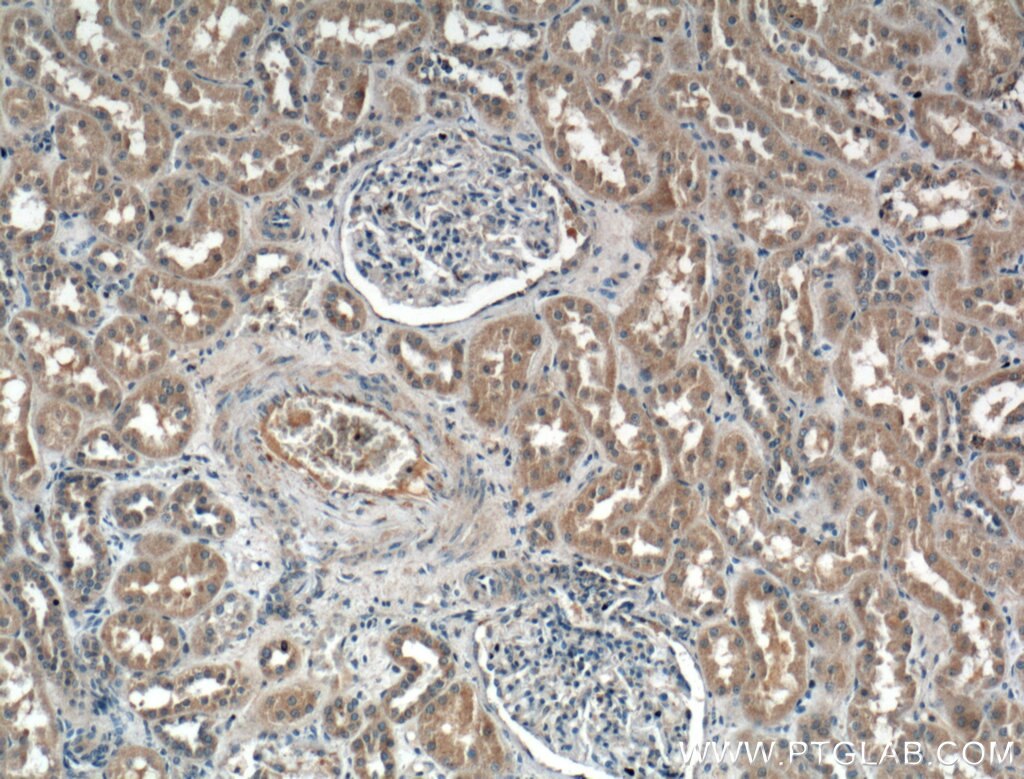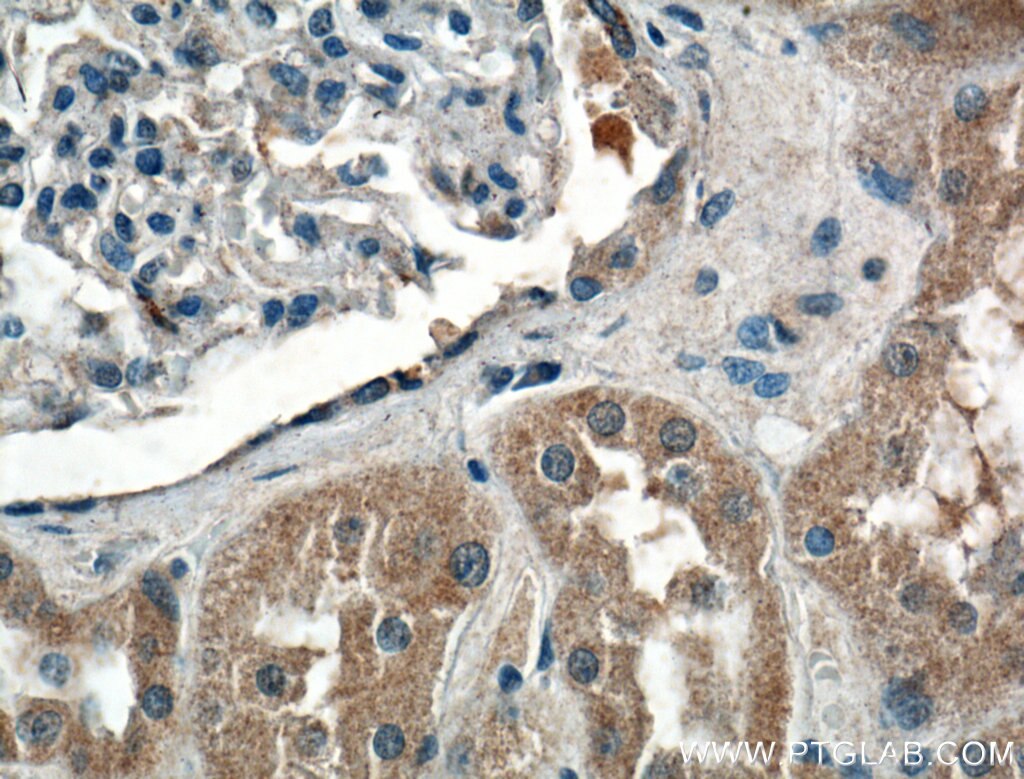CCBE1 Polyklonaler Antikörper
CCBE1 Polyklonal Antikörper für IHC, ELISA
Wirt / Isotyp
Kaninchen / IgG
Getestete Reaktivität
human
Anwendung
IHC, ELISA
Konjugation
Unkonjugiert
Kat-Nr. : 24449-1-AP
Synonyme
Galerie der Validierungsdaten
Geprüfte Anwendungen
| Erfolgreiche Detektion in IHC | humanes Nierengewebe Hinweis: Antigendemaskierung mit TE-Puffer pH 9,0 empfohlen. (*) Wahlweise kann die Antigendemaskierung auch mit Citratpuffer pH 6,0 erfolgen. |
Empfohlene Verdünnung
| Anwendung | Verdünnung |
|---|---|
| Immunhistochemie (IHC) | IHC : 1:50-1:500 |
| It is recommended that this reagent should be titrated in each testing system to obtain optimal results. | |
| Sample-dependent, check data in validation data gallery | |
Produktinformation
24449-1-AP bindet in IHC, ELISA CCBE1 und zeigt Reaktivität mit human
| Getestete Reaktivität | human |
| Wirt / Isotyp | Kaninchen / IgG |
| Klonalität | Polyklonal |
| Typ | Antikörper |
| Immunogen | CCBE1 fusion protein Ag19686 |
| Vollständiger Name | collagen and calcium binding EGF domains 1 |
| Berechnetes Molekulargewicht | 406 aa, 44 kDa |
| GenBank-Zugangsnummer | BC046645 |
| Gene symbol | CCBE1 |
| Gene ID (NCBI) | 147372 |
| Konjugation | Unkonjugiert |
| Form | Liquid |
| Reinigungsmethode | Antigen-Affinitätsreinigung |
| Lagerungspuffer | PBS mit 0.02% Natriumazid und 50% Glycerin pH 7.3. |
| Lagerungsbedingungen | Bei -20°C lagern. Nach dem Versand ein Jahr lang stabil Aliquotieren ist bei -20oC Lagerung nicht notwendig. 20ul Größen enthalten 0,1% BSA. |
Hintergrundinformationen
CCBE1 (collagen and calcium-binding EGF domain-containing protein 1) is a secreted protein that is indispensible for lymphangiogenesis during development. CCBE1 may be a guidance molecule that regulates lymphangioblast budding and possibly migration (PMID: 19287381). The gene of CCBE1 maps to 18q21.32 and encodes a protein of 44 kDa that contains an EGF-like domain and two collagen-like domains. Mutations in the CCBE1 gene cause Hennekam lymphangiectasia-lymphedema syndrome (PMID: 19935664).
Protokolle
| Produktspezifische Protokolle | |
|---|---|
| IHC protocol for CCBE1 antibody 24449-1-AP | Protokoll herunterladen |
| Standard-Protokolle | |
|---|---|
| Klicken Sie hier, um unsere Standardprotokolle anzuzeigen |



